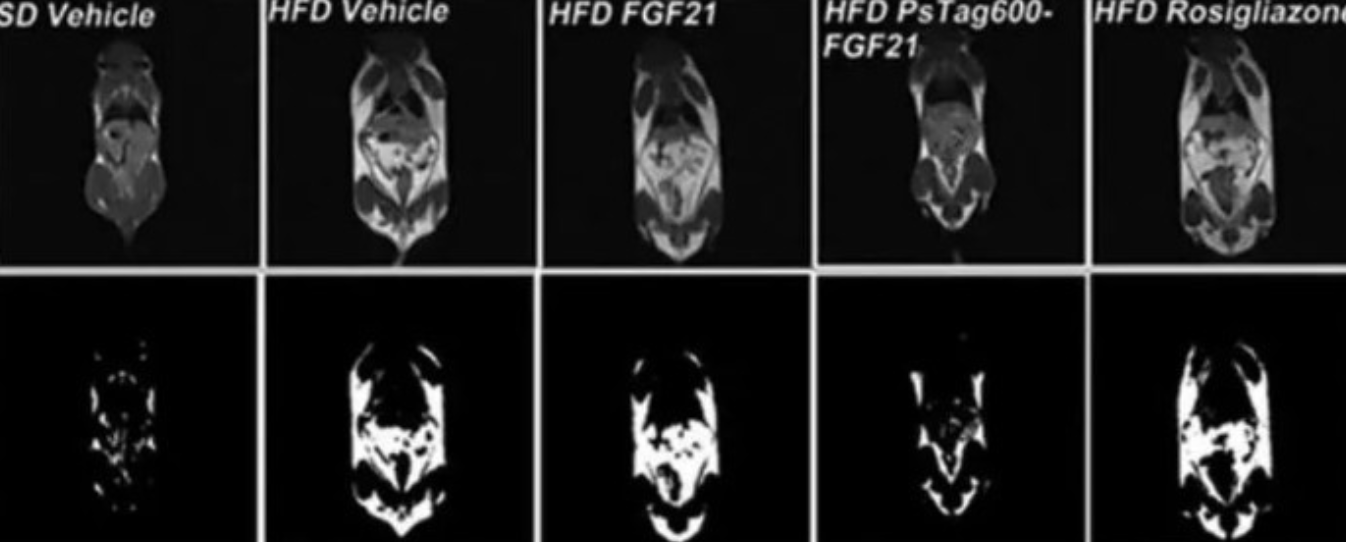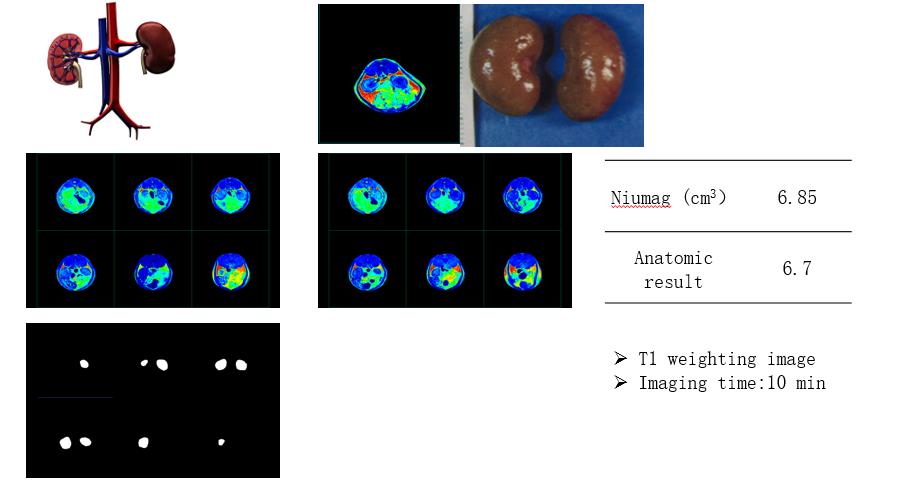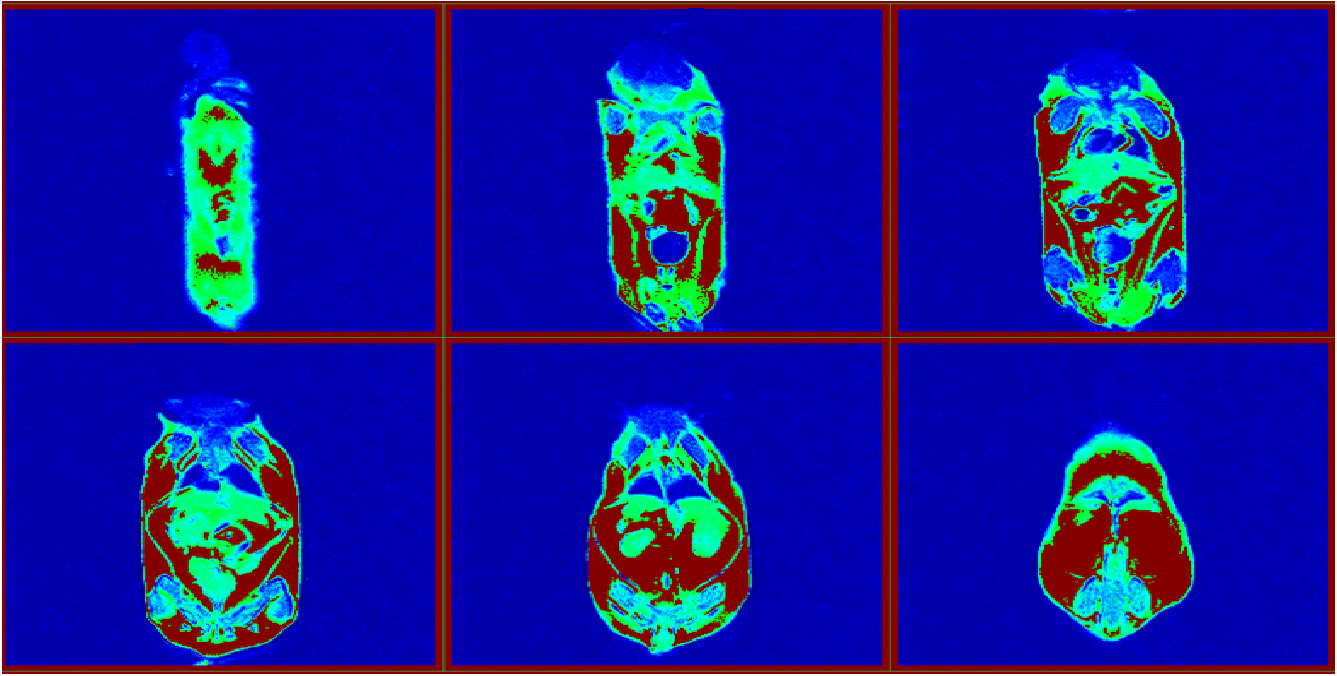Мышь МРТ по данным LF ЯМР
Мышь МРТ (Магнитно-резонансная томография) это новаторский метод медицинской визуализации, который играет ключевую роль в исследованиях на мышах.. Используя мощное магнитное поле, радиоволны, и передовые вычисления, Мышь МРТ создает сложные и полные изображения внутренних структур мыши. Этот неинвазивный метод позволяет исследователям вникать в тонкости работы органов., ткани, и другие жизненно важные компоненты живой мыши.
Мышь МРТ Приложение
Приложения Мышь МРТ обширны и чрезвычайно ценны. Позволяет визуализировать различные структуры., например, мозг, сердце, легкие, печень, почки, и многие другие органы. Кроме того, Мышь МРТ оказывается незаменимым при изучении болезненных процессов, мониторинг эффекта лечения, и оценка эффективности препарата.
Для этого могут быть использованы различные методы визуализации. Мышь МРТ, каждый из которых служит конкретным исследовательским целям. Т1-взвешенная визуализация, Т2-взвешенная визуализация, диффузионно-взвешенная визуализация, и функциональная МРТ входят в число методов, которые исследователи могут использовать в зависимости от характера своего исследования..
Мышь МРТ особенно важно для исследователей, исследующих болезни и состояния, поражающие мышей., например, рак, Болезнь Альцгеймера, Болезнь Паркинсона, и сердечно-сосудистые заболевания. Более того, это дает возможность изучить воздействие токсинов окружающей среды, наркотики, и другие процедуры по уходу за телом мыши.
Мышь МРТ и другие методы визуализации
Существует несколько методов получения изображений мышей для исследовательских целей.. Микрокомпьютерная томография (микроКТ) использует рентгеновские лучи для создания 3D-изображений высокого разрешения., в первую очередь полезен для изучения структуры кости, но способен визуализировать и другие ткани и органы.. Оптическая визуализация, используя свет, позволяет исследователям изучать различные биологические процессы, включая экспрессию генов и кровоток, с помощью таких методов, как биолюминесцентная визуализация (СТАНОВИТЬСЯ) и флуоресцентная визуализация (ФЛИ). УЗИ, использование звуковых волн, особенно полезен для сердечно-сосудистых исследований и изучения кровотока.. Позитронно-эмиссионная томография (ДОМАШНИЙ ПИТОМЕЦ) включает введение радиоактивного индикатора в тело мыши и последующее обнаружение позитронов, испускаемых индикатором, с помощью ПЭТ-сканера., который помогает изучать метаболизм и связывание рецепторов. Сходным образом, Однофотонная эмиссионная компьютерная томография (ОФЭКТ) также использует радиоактивные индикаторы, но использует другой тип индикаторов для изучения ряда биологических процессов..
Эти методы, независимо от того, используются ли они по отдельности или в сочетании, предложить всестороннее понимание анатомии мыши, биология, и болезненные процессы. Они служат бесценными инструментами для расширения наших знаний в области медицинских исследований и совершенствования методов лечения..
Мышь МРТ методом низкопольного ЯМР
Одна многообещающая технология для Мышь МРТ это ЯМР в низком поле (Ядерный магнитный резонанс). Работает при более низкой напряженности магнитного поля, чем традиционные клинические аппараты МРТ., Низкопольный ЯМР имеет значительный потенциал в доклинических исследованиях на мышах..
Привлекательность низкопольного ЯМР заключается в его доступности и доступности., поскольку для эксплуатации не требуется специализированное помещение. Более того, это позволяет исследователям изучать разнообразные модели и ткани мышей., включая мозг, печень, почки, и другие жизненно важные органы.
Ключевым преимуществом низкопольного ЯМР является его способность изучать образцы в их естественном состоянии., устранение необходимости инвазивных процедур. Это имеет решающее значение для понимания естественной структуры и функций тканей и органов мыши., улучшение нашего понимания процессов заболеваний, и содействие разработке новых методов лечения.
ЯМР низкого поля имеет ряд преимуществ по сравнению с традиционными аппаратами МРТ с высоким полем.. Его более низкая стоимость и пониженная чувствительность к артефактам, вызванным движением или металлическими имплантатами, повышают качество изображения и делают его привлекательным вариантом для исследователей с ограниченным бюджетом.. Более того, уменьшение количества артефактов движения особенно полезно для изучения таких органов, как сердце мыши., которые склонны к движению во время визуализации.
В заключение, Мышь МРТ, с его революционными методами и развивающимися технологиями, такими как ЯМР в низком поле., продолжает формировать ландшафт доклинических исследований и медицинских достижений.
 заплесневелый
заплесневелый




